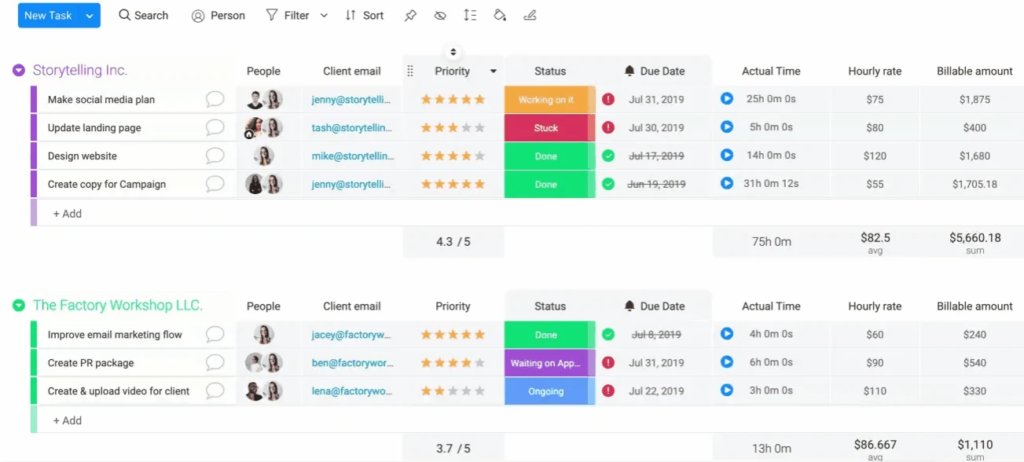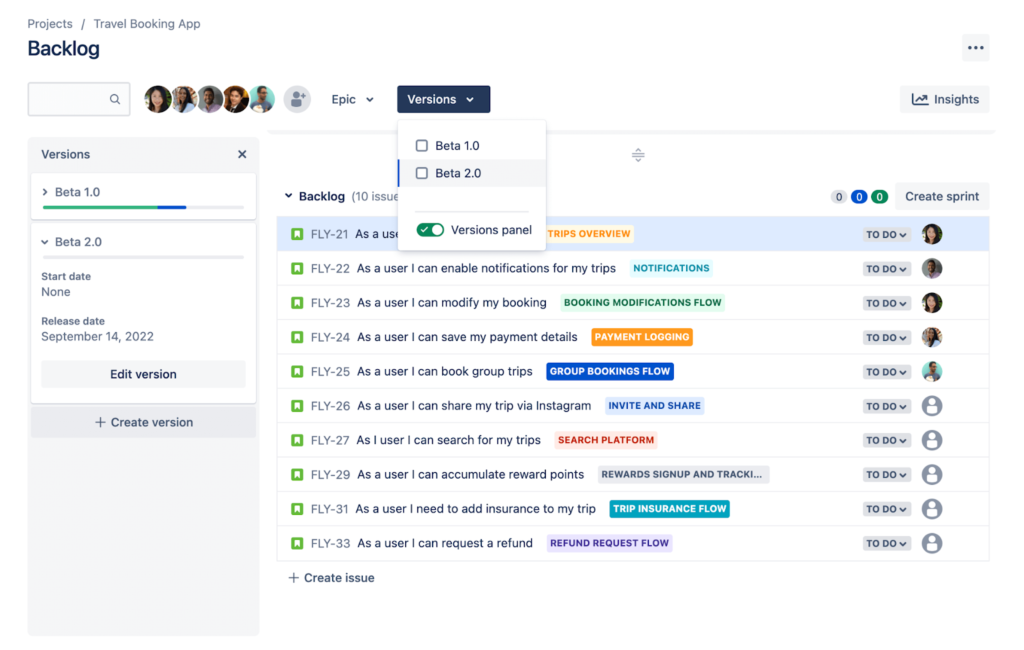Project Management
Key takeaways
In this article…
8 core responsibilities of a project manager
Project managers must balance a number of different responsibilities to complete a project successfully. These core responsibilities illustrate some of their most important skills, priorities, and areas of focus:
1. Define project parameters and big-picture goals
In the earliest stages of project planning, project managers must meet with internal and/or external project stakeholders to understand their big picture goals and expectations.
Because this pre-planning or “discovery phase” may be too early for stakeholders to know what they need and what they can afford, it is the project manager’s job to help them understand what’s possible and prioritize the most important project deliverables if budget runs low. If necessary, the project manager may also need to bring in subject matter experts to explain how the project team will handle specific requests or tasks.
2. Assemble and lead a project team
Whether or not they have direct people management responsibilities, project managers are responsible for assembling and leading a team of professionals who have the necessary skills and availability. These may be software developers, data analysts, digital marketers and designers, finance specialists, or business associates, depending on the type of project work.
Project managers may also indirectly manage and coordinate more experienced specialists, including client success managers, technical or finance leads, product managers, QA testers, and risk managers.
3. Identify and schedule project tasks and resources
Once a basic project outline and team members are in place, project managers need to determine what will be required to complete the project. This involves setting more specific project milestones that fold into the project’s bigger goals.
More specifically, project managers need to allocate resources and create detailed timelines for each project task and subtask; this step is particularly crucial to staying on budget and deadline.
4. (Re)set deadlines
In theory, setting deadlines for a project should be fairly easy, but it’s often necessary for project managers to pivot around unexpected obstacles. To keep an eye out for potential scope creep or bottlenecks that will impact project timelines, project managers must regularly check in with both project team members and clients to gauge task progress, overall satisfaction, and any new project variables or goals that may arise.
5. Maintain internal team communications and schedules
Project managers typically oversee multiple project team members who are individually responsible for different tasks, deliverables, and deadlines. It is important for the project manager to set reasonable deadlines across all of these roles and proactively communicate wins, challenges, and other helpful project updates.
In addition to one-on-one messaging, project managers must facilitate teamwide communication and collaboration to ensure everyone understands how they contribute to bigger project goals. Effective internal communications help strengthen team morale and interpersonal relationships, leading to smoother projects overall.
6. Maintain stakeholder communications
One of the most important responsibilities of a project manager is stakeholder relationship management. Whether the project is internal-only or a collaboration with external clients, all projects have stakeholders with unique expectations, goals, and priorities.
Project managers need to stay in constant communication with these individuals about the project’s progress. Regular status updates establish strong stakeholder relationships with mutual trust and bidirectional communication — stakeholders often have important updates that will help move the project forward.
Get started: How to Create a Project Status Report [Template & Examples]
7. Anticipate and mitigate project risks
Whether it’s scope creep, resource constraints, other limitations, project managers must proactively prepare for as many risks as possible and take action to address problems as soon as they surface. Known risks should be acknowledged at the start of a project, and as new risks come to light, the project manager needs to communicate both the problem and viable solutions to all stakeholders in a timely fashion.
8. Monitor and report on project progress and performance
Progress tracking at macro and micro levels is an important part of a project manager’s job. The project plan should identify which metrics the project manager will use to track progress and how often stakeholders will receive status updates. Depending on the project’s requirements, project managers may need to report progress on a daily, weekly, monthly, or quarterly basis.
Project manager requirements and qualifications
While there are no legal requirements to become a professional project manager, several organizations share similar requirements and prerequisites:
Key skills for a project manager
Industries like software development, healthcare, and construction often require specialized project management skills and expertise, but all project managers must have the same fundamental skills regardless of their industry:
Important tools and software for a project manager
Some of the most important tools project managers need to be effective include project management and project portfolio management (PPM) software, time tracking software, version control and developer tools, and collaboration and communication tools.
Project and portfolio management software
Project management and PPM software can be used to organize, automate, and analyze individual components of a project or multiple projects. Many project management solutions include time tracking, communication, billing and invoicing, and other helpful features for all aspects of the project lifecycle.
Examples:

Time tracking software
Time tracking software helps project team members track time spent on projects or project tasks, which can be helpful for more accurate billing and scope management. Time tracking is often built into project management software.
Examples:
Version control and app development software
For more technical projects and initiatives, it may be necessary to invest in version control or app development software. This can help your team better visualize progress, collaboratively work on tasks, and easily handle rollbacks when needed.
Examples:

Collaboration and communication software
Collaboration and communication software enable project teams to align with each other on projects and individual tasks. These tools may support messaging, comment threads, and/or video calling. Many of these features are also baked into project management software, as you’ll see in the examples listed below.
Examples:
FAQs
About the author


